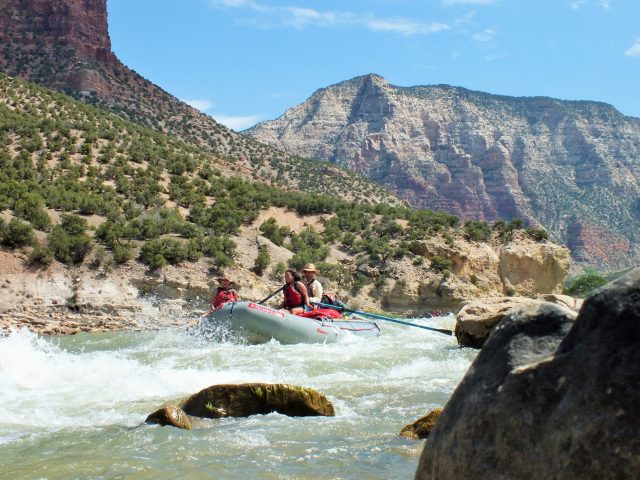Almost everything you need to Know about the Yampa River
Almost everything you need to Know about the Yampa River
To attempt to explain everything you need to know about the Yampa River through Dinosaur National Monument in one short blog is all but impossible but here are a few of the basics. The Yampa meanders from its headwaters near Steamboat, Colorado through town where teenagers float on tubes, into a narrow canyon with class V rapids where gripped kayakers test their skills, through flat desert until it reaches Deerlodge campground. This is the beginning of the Yampa Canyon and the start of 71 miles of some of the best white water rafting in the Western US. There are entire books written on the importance of the Yampa river to the environmental movement, natural history, and rafting community.
In the early 1900’s the dam craze took off across the United States. There was a belief vibrating through humanity that man could conquer nature, that enough technology had been developed power could be harnessed and controlled for the utility of human kind and there were very few movements to stop the development of public lands. It was in this mindset that the Echo Park Dam was proposed. If this dam would have been built it would have flooded the entire Yampa canyon we raft down today. The story is long, and best told through the misty eyes of a crusty river guide who sees their home flooding with the creation of the dam, but in short: an LA family came rafting down the Yampa and fell in love. They brought the story of the proposed Echo Park dam back to LA where David Brower and the Sierra Club learned of it. Through massive efforts people from a multitude of groups fought to save the Yampa. This became the first nationwide grass roots environmental movement. This makes the Yampa the last major undammed tributary of the Colorado river system. Today almost every soul who passes down the Yampa canyon expresses their gratitude for the Sierra Club helping to preserve the waterway.
Not only is the lack of dam on the Yampa historically significant, it creates an untampered environment for the creatures that call the eastern Utah desert home. Scientist study the animals, bugs, fish and plants in an attempt to see the effects that dams have on river ecosystems. In the 70’s scientist found that the Yampa Canyon was nesting some of north America’s last Paragon Falcons. They tagged and tracked the birds and helped ensure the young would hatch to help repopulate the endangered animals. Today falcons can be seen throughout the river canyon in the summer months.
Beyond environmental history, astronomers study the night sky from Dinosaur National Monument as it is the darkest national monument in the country. Its remote location protects it from the light and air pollution of human existence.
And Even before the River Rats and scientists called this place, home there are 500 years’ worth of Native Americans history, who thrived in the canyons, leaving us to marvel at what they left behind.
The Yampa River is one of the river most dynamic rivers in the country, changing with the natural flood stages of the Colorado snowpack eventually dwindling down to a mild stream as the snowpack disappears. This makes the river exciting to raft and different every time you launch rafts and boats from the put in.

